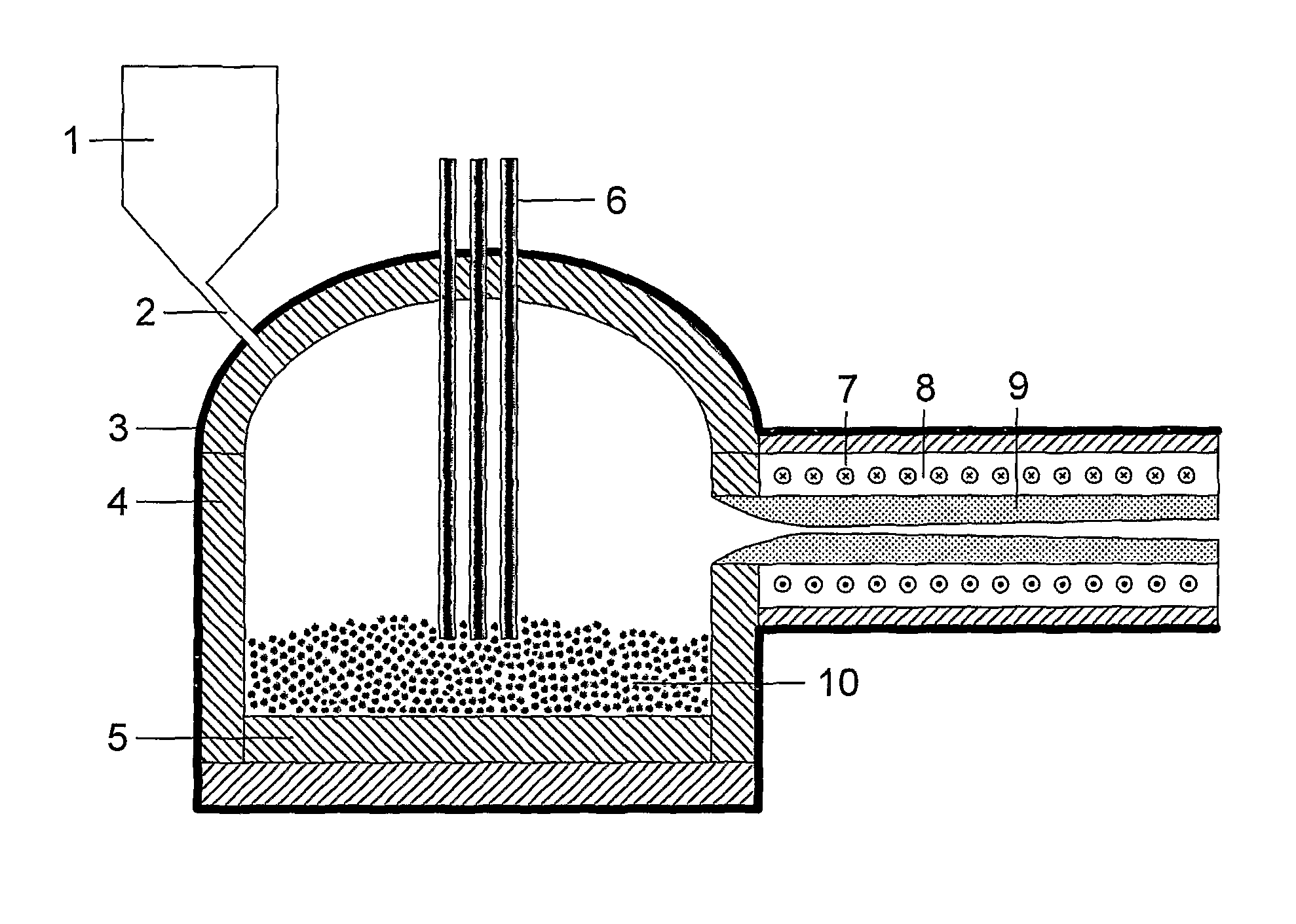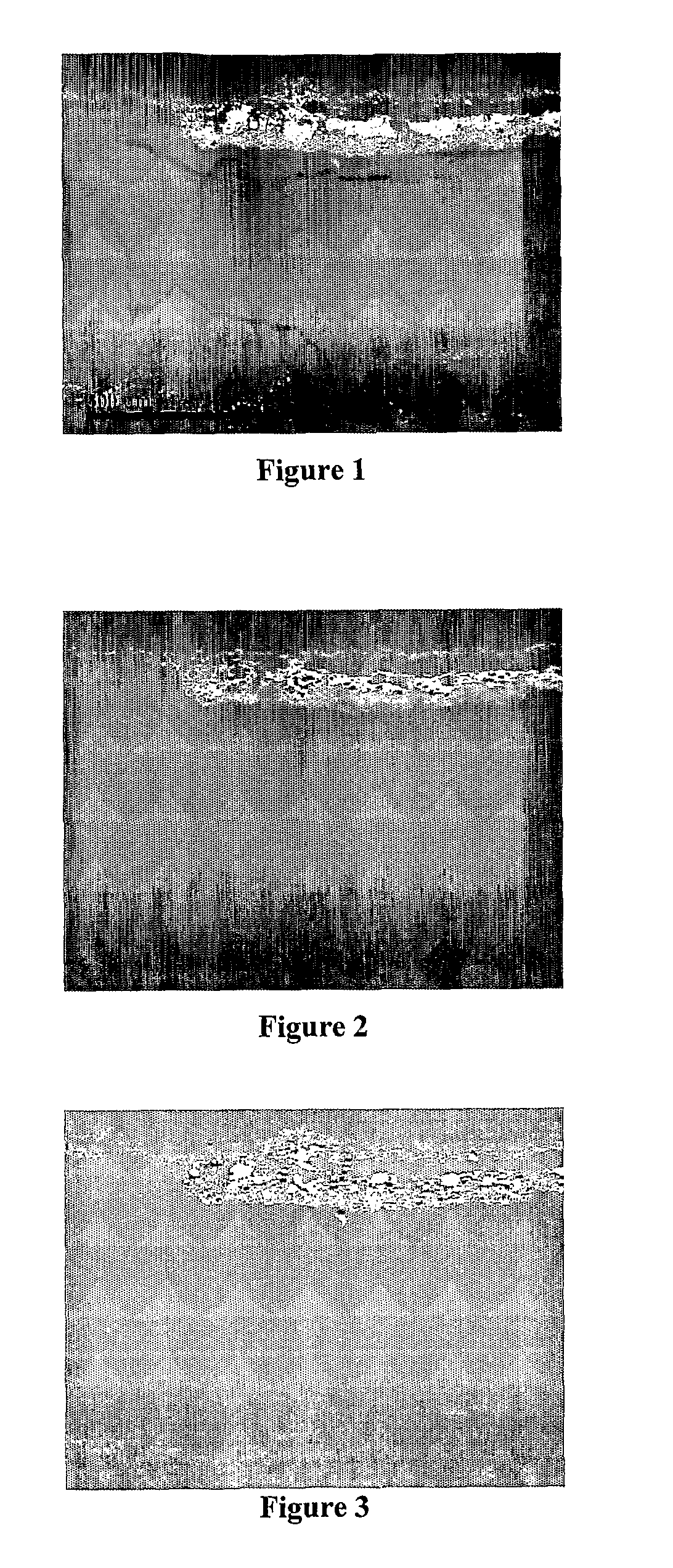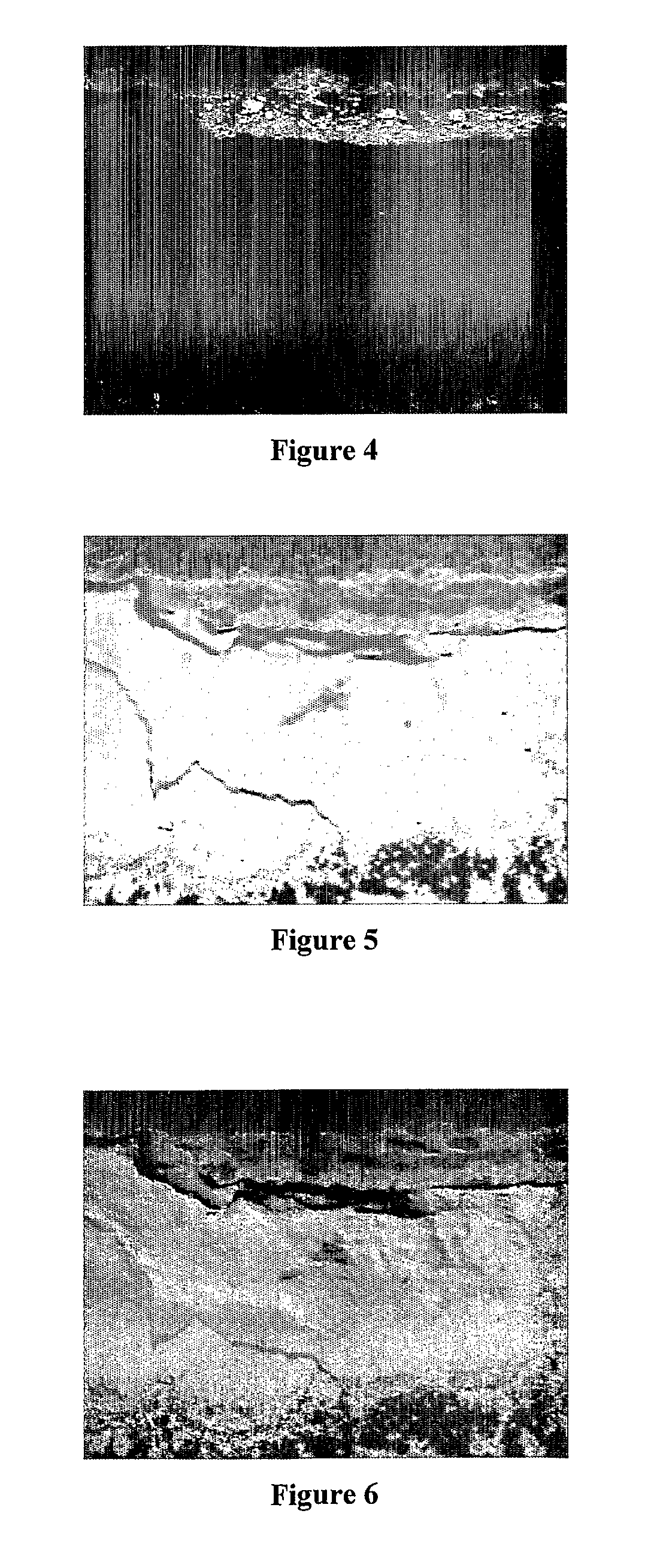Production process
a production process and production technology, applied in the direction of lighting and heating apparatus, machines/engines, furniture, etc., can solve the problems of condensation and deposition on (internal surfaces) the nozzles of species present in the gas stream, the effect of adding heating the nozzles cannot be expected to have any practical effect on the blocking/deposition problem, and the effect of deposition problems
- Summary
- Abstract
- Description
- Claims
- Application Information
AI Technical Summary
Benefits of technology
Problems solved by technology
Method used
Image
Examples
example
[0054]The two main series of experiments conducted were from TMG-84 to TMG-90 and TMG-91 to TMG-95. The first series had no additional heating of the nozzle surface, except for TMG-87, which is included here within the second series. Experiments TMG-91 to TMG-95, and TMG-87, included additional heating of the nozzle. The following summarises the results obtained.[0055]a. TMG-84. No additional heating of the nozzle. Blockage occurred early and irreversibly; reaction terminated.[0056]b. TMG-85. No additional heating of the nozzle. Blockage early and irreversible; no significant data obtained.[0057]c. TMG-86. No additional heating. Nozzle blocked at a throat surface temperature around 1200° C.[0058]d. TMG-87. Additional heating provided by nozzle position. Run proceeded to completion (300 g).[0059]e. TMG-88. No additional heating provided. Experiment failed early.[0060]f. TMG-89. No additional heating provided. Experiment failed early.[0061]g. TMG-90. No additional heating provided, bu...
PUM
| Property | Measurement | Unit |
|---|---|---|
| temperature | aaaaa | aaaaa |
| temperature | aaaaa | aaaaa |
| temperature | aaaaa | aaaaa |
Abstract
Description
Claims
Application Information
 Login to View More
Login to View More - R&D
- Intellectual Property
- Life Sciences
- Materials
- Tech Scout
- Unparalleled Data Quality
- Higher Quality Content
- 60% Fewer Hallucinations
Browse by: Latest US Patents, China's latest patents, Technical Efficacy Thesaurus, Application Domain, Technology Topic, Popular Technical Reports.
© 2025 PatSnap. All rights reserved.Legal|Privacy policy|Modern Slavery Act Transparency Statement|Sitemap|About US| Contact US: help@patsnap.com



